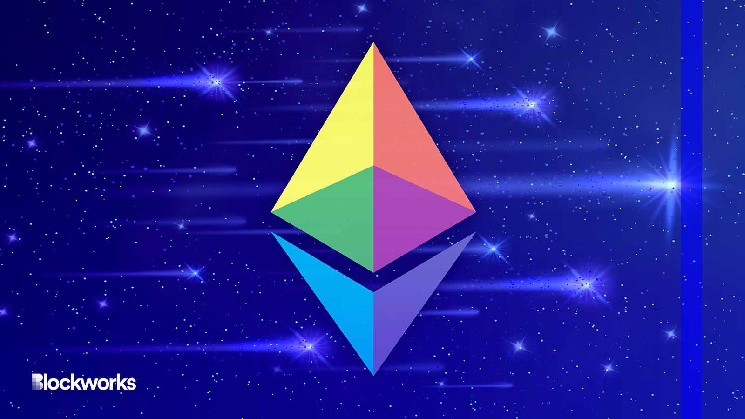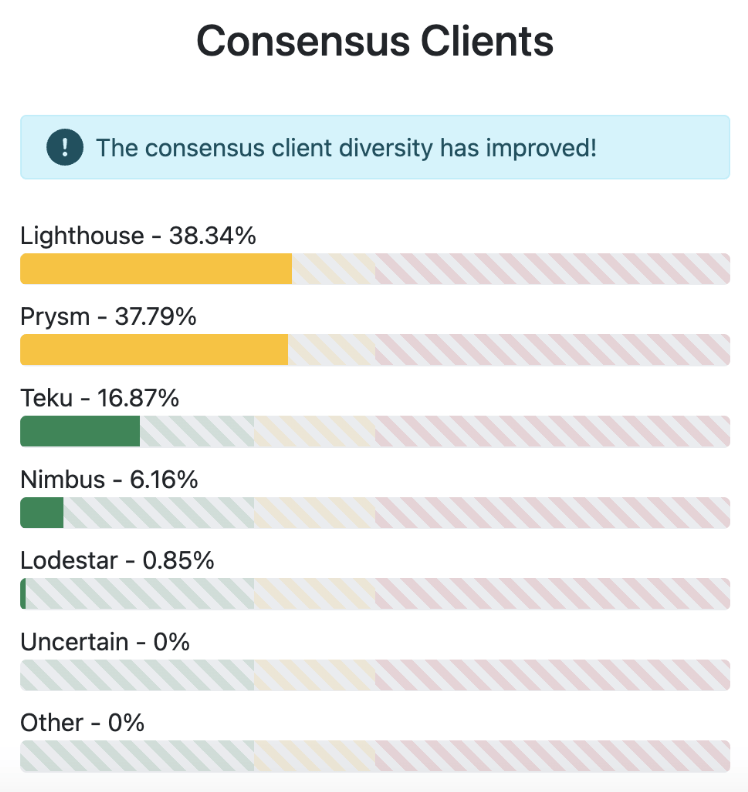Ethereum Finality Hiccup a ‘Fire Drill’ That ‘Could Have Been Avoided’

The Ethereum network suffered a hiccup Thursday; one that developers are still parsing for clues. But as a user, you would hardly have noticed.
At worst, it would have taken slightly longer for a transaction to be included in a block, and there was a somewhat lower certainty that a given action would be considered final — for about 25 minutes.
The blockchain’s developer community saw the incident as a strong test of the network’s resilience. It also served as further impetus to increase diversity of the independent software clients that make Ethereum run.
The extent of Ethereum’s client diversity is unique among major blockchains, and a cause championed by members of the community such as the pseudonymous Superphiz — known as the “Ethereum community health consultant” — who was one of the first to notice the issue.
“Barely a blip happened, but it was so uncharacteristic for the Ethereum network that it was a big deal anyway,” he tweeted Friday.
The same issue resurfaced again Friday, which Superphiz called, “not surprising,” adding, these things tend to happen in waves.
What happened?
The precise cause is not yet known, but the effect was a failure to finalize blocks. It’s likely to have involved a coincidence of “two or three issues,” according to Irina Timchenko, Ethereum blockchain manager at Everstake.
“During the incident, validators experienced issues with Prysm and Teku nodes. Some of these issues were resolved after a restart, while others returned to normal without requiring a restart,” Timchenko told Blockworks.
“Subsequently, validators noticed a spike in CPU usage, which appears to be a second-order effect rather than the root cause of the problem,” she added.
According to a Prysm developer known as Potuz, “several valid, but untimely attestations were broadcast in the network. This typically happens when a node that is struggling to be synced, attests with an old view of the chain.”
This stressed consensus clients in different ways to the point that they, specially those running on weaker hardware, started struggling to follow the chain. 2/8
— Potuz (@potuz1) May 12, 2023
A fix is already in the works, which has become more urgent since the problem has recurred.
Mainnet is not finalizing again. Prysm is releasing a patch today. Will keep you updated!
— terence.eth (@terencechain) May 12, 2023
Timchenko and others say the loss of finality could have been avoided entirely if less than a third of all validators ran the same consensus layer software client. Currently, two clients, Prysm and Lighthouse, are estimated to be operating on greater than a third of Ethereum nodes, according to clientdiversity.org.

Freddy Zwanzger, Ethereum ecosystem lead at Blockdaemon agrees.
“The fact that Ethereum does have multiple client implementations actually seemed to have prevented the blockchain from halting, and if all consensus clients would have less than 33% of the network, the finalization delay would also have been avoided,” Zwanzger told Blockworks.
Since blocks were still being produced, transactions were processed continuously, which is why end users didn’t see much, if any, effect, he added.
Liveness over safety
In designing blockchains with proof-of-stake consensus, developers have to make choices over how to prioritize one of two properties: safety and liveness.
Colloquially, safety is thought of as “avoiding bad things.” That means every node in the network agrees consistently on the state of the chain.
Ethereum prioritizes liveness, which is thought of as “good things happen eventually.” The blockchain is designed to be very difficult to halt.
I developed a newfound appreciation for blockchain liveness (especially LMD-GHOST fork choice) since yesterday’s incident. Ethereum didn’t finalize for 3 epochs, but it kept going. Users were barely affected or noticed the finality gap.
— terence.eth (@terencechain) May 12, 2023
It could have been worse if Prysm were still installed on upwards of 66% of nodes, which has been the case in the past.
When a consensus layer client causes a loss of finality — which is what happened Thursday — the network averts a fork (a “bad thing” in this case) so long it doesn’t have a supermajority client. But liveness was impacted because Prysm remains above the 33% threshold.
Ethereum’s specific consensus algorithm, called Gasper, saved the day, according to Gaetan Semp, a blockchain and DeFi consultant at Alyra.
“Gasper is truly an amazing consensus algorithm,” he tweeted, noting that even without a supermajority of nodes, the blockchain continued to be validated by LMD-Ghost, a “weaker ‘short-term consensus’ as venture firm Paradigm has called it. LMD is short of “Latest Message Driven” and LMD-Ghost is part of Ethereum’s “fork-choice rule.”
This is a trade-off, however, and one which not all users would approve of, Matt Fiebach of Blockworks Research noted.
“Without the ability for nodes to reach consensus and achieve transaction finality, a user cannot be sure that their transaction will be included in the Ethereum canonical chain,” Fiebach said.
Alternative architectures from Solana and Cosmos favor a chain halt to preserve safety. “A 30-minute loss of finality is unacceptable for end users because it puts transactions at risk of being reverted,” Richard Patel, a software developer for Firedancer, tweeted in response to the Ethereum glitch.
Firedancer, developed by Jump Crypto, will soon become the first independent client for Solana.
Vance Spencer, co-founder at Framework Ventures described the failure to finalize as “a significant event,” but one with “a lot of nuance.”
“Finalization is especially important for entities like exchanges which need to ensure on-chain transactions aren’t reverted after they process them off-chain,” Spencer told Blockworks.






 Bitcoin
Bitcoin  Ethereum
Ethereum  Tether
Tether  USDC
USDC  Dogecoin
Dogecoin  TRON
TRON  Cardano
Cardano  Chainlink
Chainlink  Bitcoin Cash
Bitcoin Cash  Stellar
Stellar  LEO Token
LEO Token  Hedera
Hedera  Litecoin
Litecoin  Monero
Monero  Dai
Dai  OKB
OKB  Cronos
Cronos  Ethereum Classic
Ethereum Classic  Gate
Gate  VeChain
VeChain  Cosmos Hub
Cosmos Hub  Algorand
Algorand  KuCoin
KuCoin  Stacks
Stacks  Tether Gold
Tether Gold  Zcash
Zcash  Theta Network
Theta Network  IOTA
IOTA  Tezos
Tezos  TrueUSD
TrueUSD  NEO
NEO  Polygon
Polygon  Ravencoin
Ravencoin  Dash
Dash  Decred
Decred  Synthetix Network
Synthetix Network  Zilliqa
Zilliqa  Qtum
Qtum  0x Protocol
0x Protocol  Basic Attention
Basic Attention  Siacoin
Siacoin  Holo
Holo  DigiByte
DigiByte  Enjin Coin
Enjin Coin  Nano
Nano  Ontology
Ontology  Status
Status  Hive
Hive  Waves
Waves  Lisk
Lisk  Pax Dollar
Pax Dollar  Steem
Steem  Numeraire
Numeraire  NEM
NEM  BUSD
BUSD  Huobi
Huobi  OMG Network
OMG Network  Bitcoin Gold
Bitcoin Gold  Ren
Ren  Energi
Energi  Bitcoin Diamond
Bitcoin Diamond  Augur
Augur